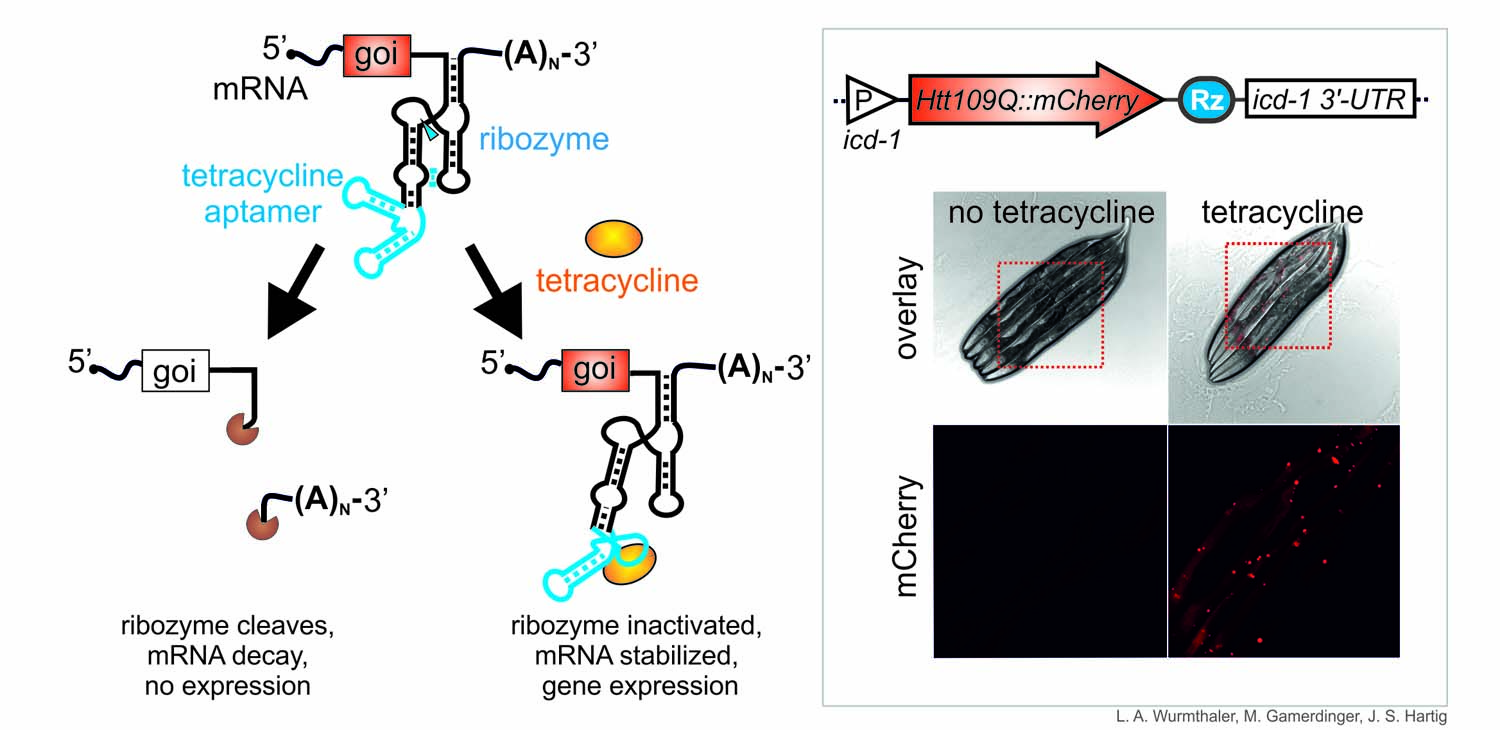
First genetic switch for C. elegans developed
Researchers from the Departments of Biology and Chemistry at the University of Konstanz close a research gap in the field of genetic switches – Development of the first inducible system for C. elegans to switch on genes – Potential medical research applications – Publication in the online journal Nature Communications
With their first ever RNA-based inducible system for switching on genes in the roundworm Caenorhabditis elegans (C. elegans), two researchers from the University of Konstanz have closed a significant gap in the research on and usage of genetic switches. The new approach was developed as part of a joint research project carried out by Dr Martin Gamerdinger (Department of Biology) and Professor Jörg Hartig (Department of Chemistry) within the University of Konstanz’s Collaborative Research Centre 969 “Chemical and Biological Principles of Cellular Proteostasis”, which is funded by the German Research Foundation (DFG). By sharing their respective expertise in the area of C. elegans and the development of RNA-based genetic switches, the researchers were able – for the first time – to successfully induce a gene in the animal model using an RNA-based genetic switch. They were further able to establish a novel inducible disease model for Huntington’s disease which opens up new opportunities for research and application. Read more...
